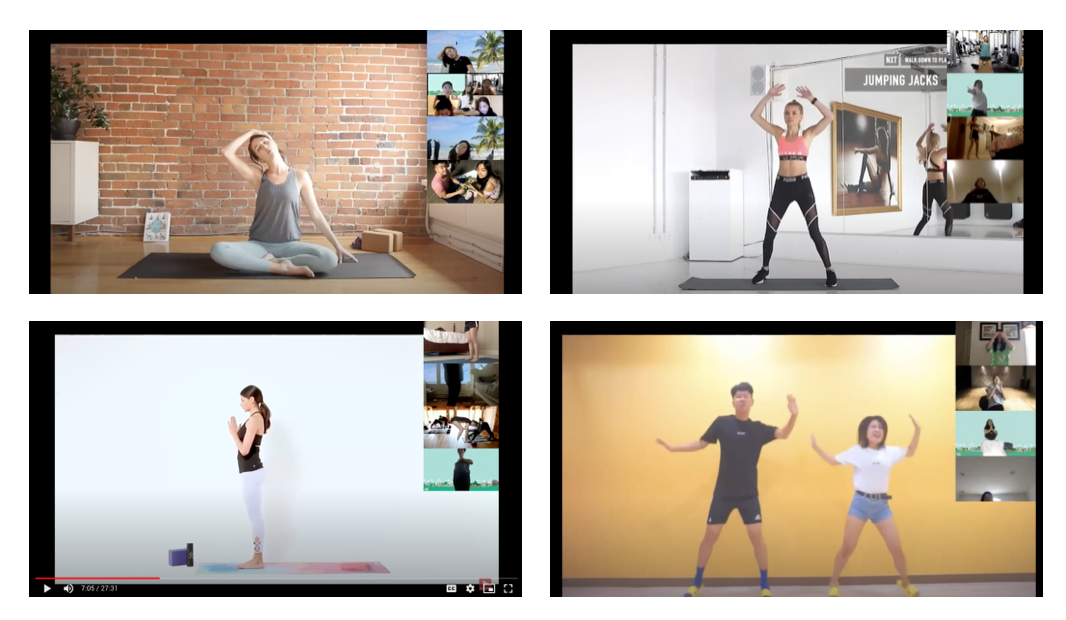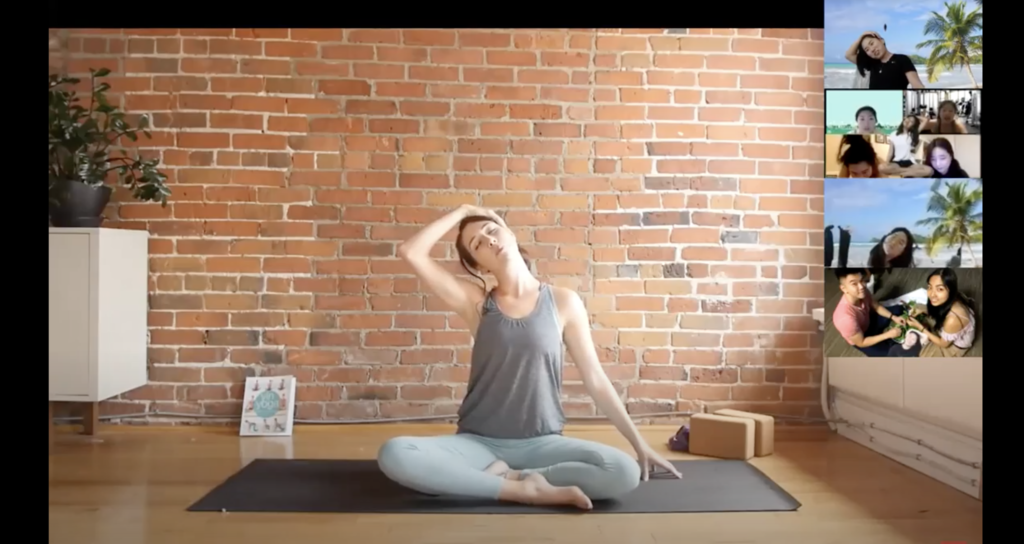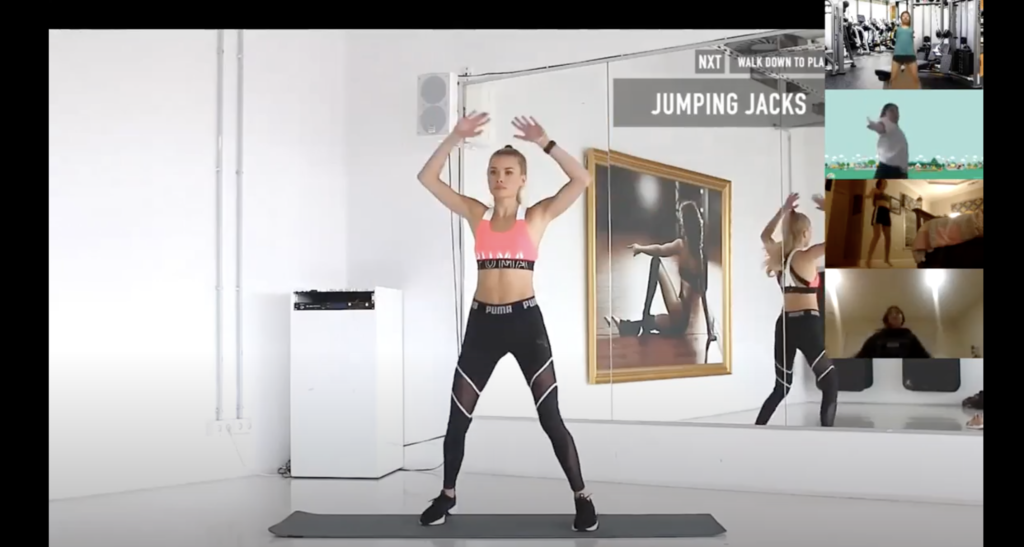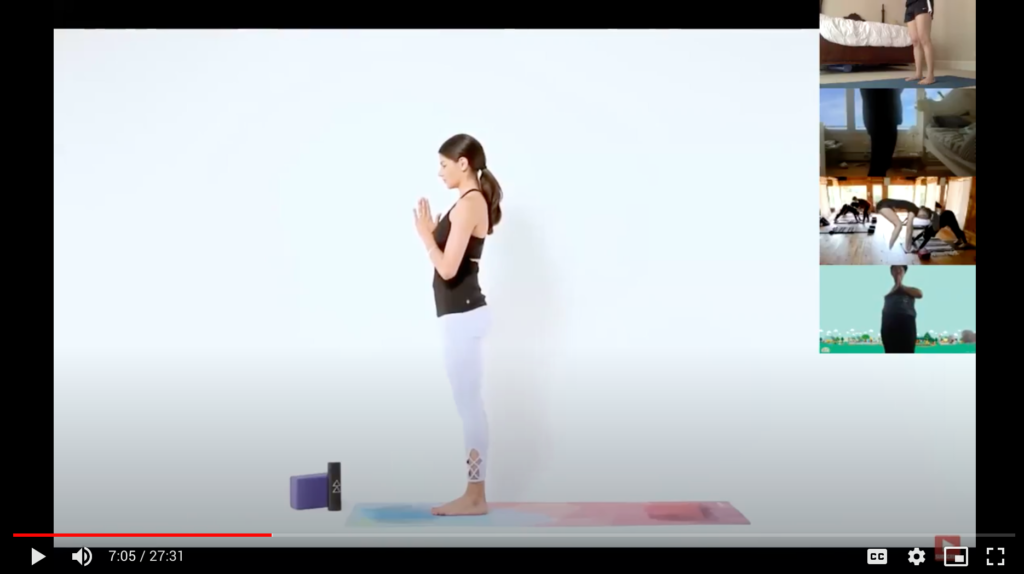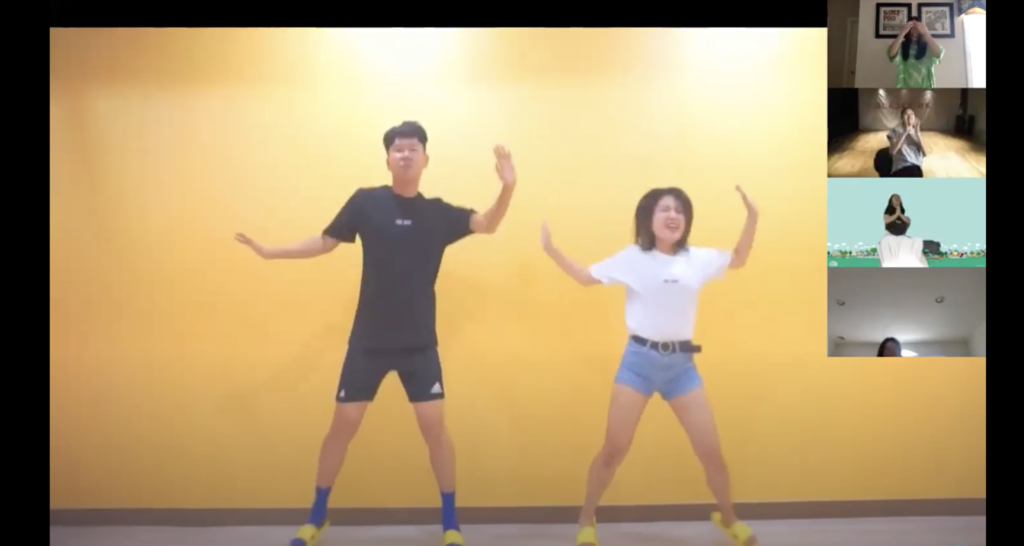Team 6: Eunice Choe, Jenna Kim, Sophia Kim, Sabrina Zhai
For our project, our group focused on the topic of improving physical fitness routines while maintaining social distancing norms. Our intervention utilized Zoom as a platform for meeting 4 times a week and online workout videos to follow. Each group member alternated in leading and scheduling the workouts. The persuasive tactic we used to lead the rest of the group into committing/doing the work out is accountability. When one of us acts as the leader for the group workout, the rest of the group acts as an outside influence to motivate the leader. This is effective because the instructor knows that the rest of the group is counting them. Because we are not only video chatting but also video recording the workout, there is a level of pressure to commit to the actual workout and do the actions properly because everyone is able to see what you’re doing. However, the downside of this persuasive tactic, it relies on the assumption that your peers will judge you and call you out when you are doing the workout properly. In our interventions, we didn’t keep a keen eye on everyone’s screen; we used the Zoom screen share feature, which takes up most of the screen and leaves all participants as a tiny thumbnail, which isn’t very noticeable. Furthermore, knowing that we were not alone helped us finish and get through the workout because we all agreed that we wouldn’t have.
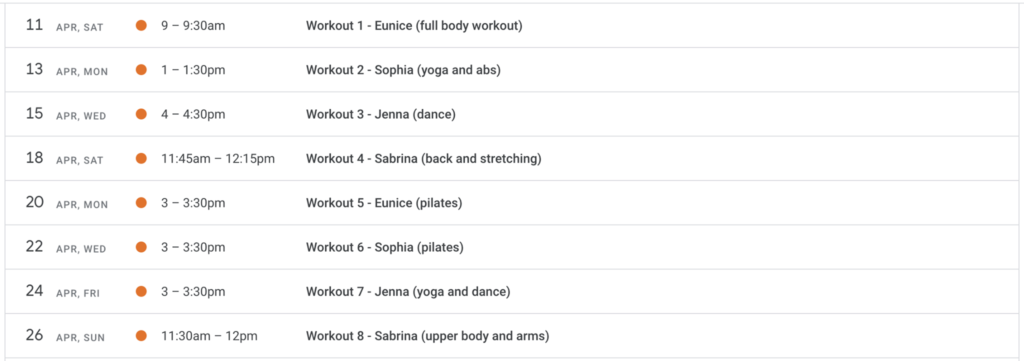
In developing this intervention strategy, we decided to focus on the members of our own group rather than our friends or family members, as we have the most similar workout goal of having a consistent workout routine during quarantine. The outcomes of our intervention was that we kept up with working out four times a week, but we had issues with scheduling once in a while. One thing we could have done is keep up a consistent schedule each week; all of our workouts were different times of the day, mostly because we’re working around each other’s schedules (classes, meetings, etc). Furthermore, the work out times were generally determined with short notice. We made a Google calendar initially, but did not end up actually using it, and simply decided times in a Messenger group chat. Our routine could probably benefit from using a calendar platform instead of merely discussing it lightly over our group chat.
As a group, we realized and enjoyed the benefits of this group workout; therefore, we agreed to continue meeting up each week even after this project ends. Our commitment to this workout routine proves the impact that this intervention has created as the four of us are willing to make a change in our daily lifestyle during quarantine to spend at least thirty minutes a day, four times a week, to workout together over video chat. The extent of success of our intervention, however, can be shown whether or not we are still working out in a couple weeks following this reflection.
